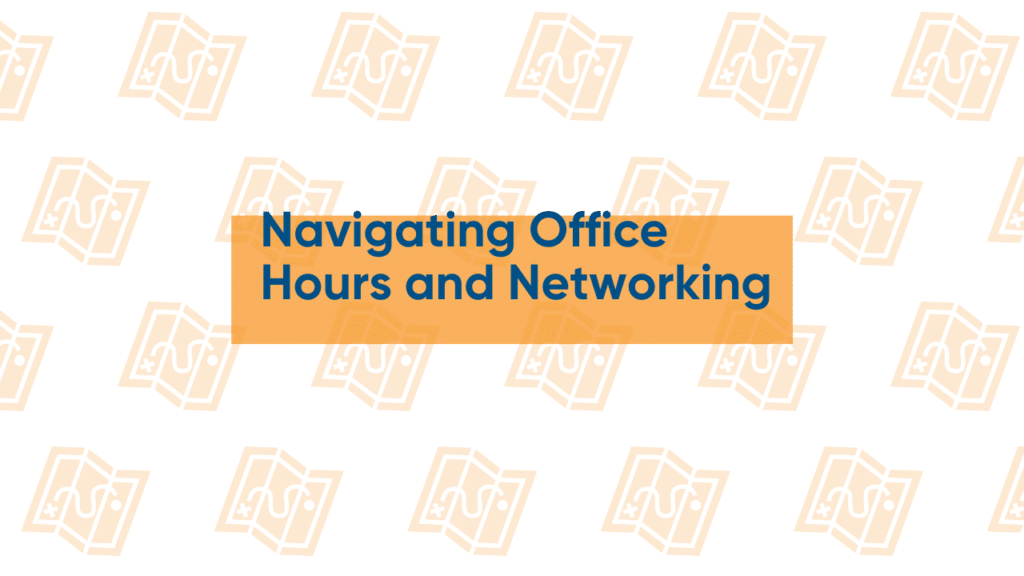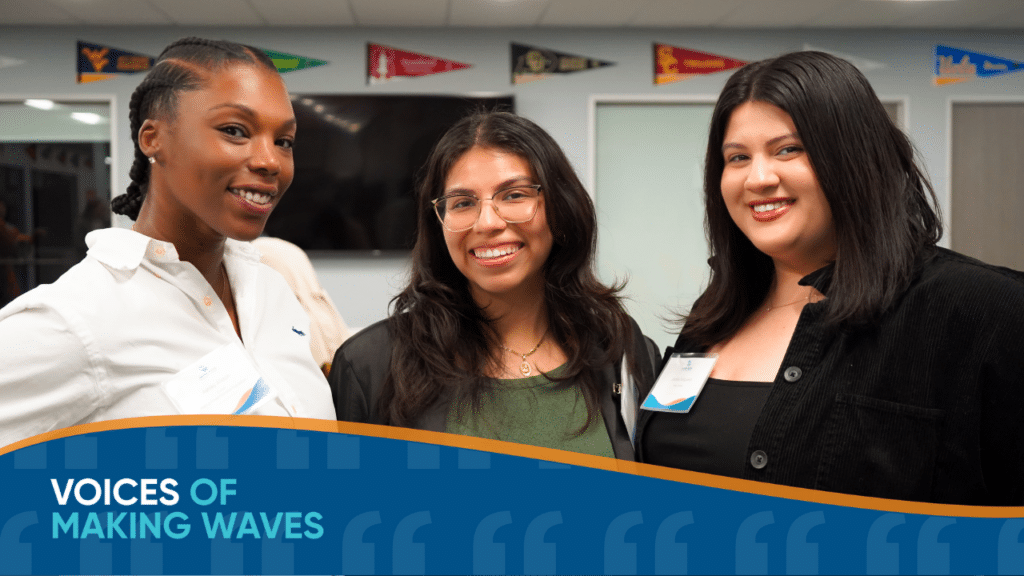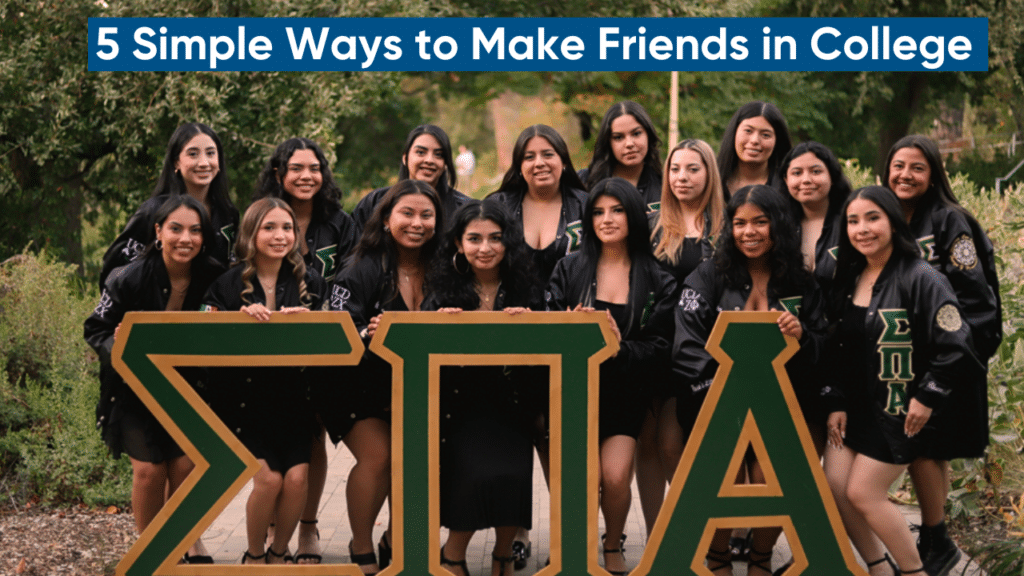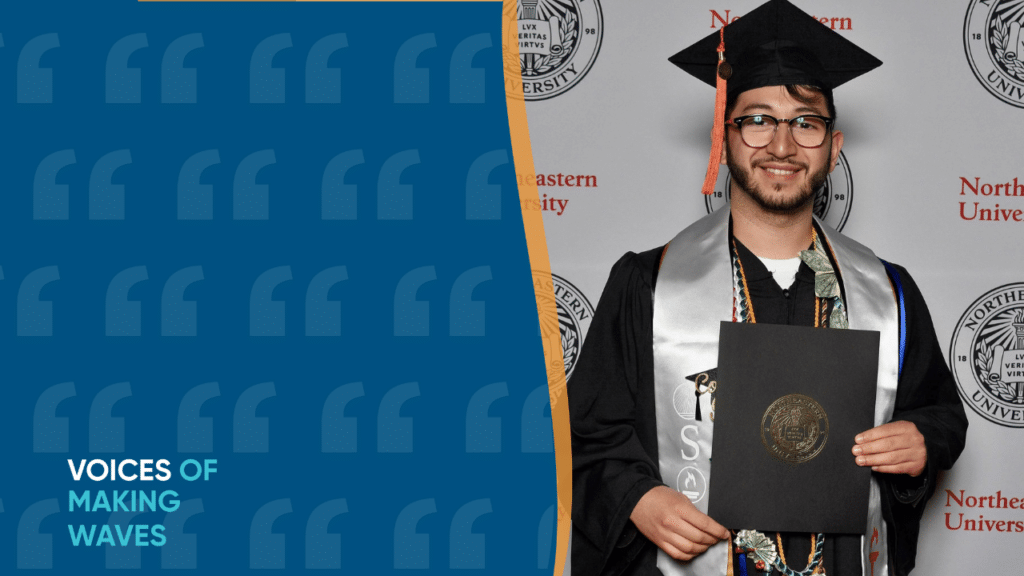
Navigating the Hidden Curriculum: From Office Hours to Networking
by Jason Pender, Felicia Tripp, and Richard Rose
As Making Waves college coaches, we partner with students to help them navigate the challenges and opportunities of higher education. Concerns shared by college students, including our Wave-Makers during our coaching meetings, are related to common barriers. These include:
- the hidden curriculum of higher education,
- imposter syndrome, and
- different types of learning in college, such as course schedules, office hours, and networking with professors.
Through tools like our Wave-Maker Success Framework, we are partnering with students so they can navigate college and career opportunities in a manner that is authentic to their sense of self and community.
Whether you are currently in college or are considering college in your future, we hope this information on specific aspects of the hidden curriculum can help you understand and overcome these barriers and reach your college and career goals.
Hidden curriculum of higher education
The hidden curriculum is the unspoken values and norms of higher education. Some consider these to be universal and some – such as first-generation college students – have little to no knowledge they even exist.
Norms within the hidden curriculum include networking with faculty, attending office hours, or engaging in class discussions. We’ll provide ways to navigate these aspects of the hidden curriculum below.
One practice related to the hidden curriculum is gatekeeping, which limits who gets access to key information related to success and hides the fact that a hidden curriculum exists in the first place.
Imposter syndrome
This gatekeeping phenomenon can often result in students experiencing imposter syndrome, or seeing yourself as undeserving, a fraud, and not good enough.
But in fact your spot on campus has been earned, you are competent and good enough to succeed in college. Your peers from privileged backgrounds are given resources often withheld from first-gen students.
As coaches, we work with students to understand the hidden curriculum and the resulting emotional impact and lived experiences.
Students can deconstruct the systems they are working within and begin to practice agency, where possible, to reach their goals of achieving an education and pursuing the career of their choice.
Different types of learning and networking in college
Another area related to the hidden curriculum is the different types of learning and networking in college that are not always made clear.
Diving into why and how your college experience is different than your high school one – and what supports you need – becomes a key strategy to success.
As coaches, we help raise your awareness of colleges’ approaches to instruction, give space to assess which additional supports serve your goals, and guide you on how to use them effectively.
Here are common questions with answers that will help you navigate different aspects of college and of the hidden curriculum on your campus, like your class schedule, office hours with professors, and networking with professors.
What are office hours and what are the benefits of attending them?
Most college students share that they are hesitant to attend their professor’s office hours because it can feel intimidating or even as if they are being called to the principal’s office like in high school.
Here is a Wave-Maker’s thoughts on their experience when it came to office hours:
“I knew it was a best practice to go to office hours, but the imposter syndrome always made me feel as though I needed to double check everything. Whenever I would talk to my friends about office hours, they would also share that their sessions would focus on only what they didn’t know.”
Naomi Montenegro-Alarcon
There are many benefits students experience once they move through their hesitation of attending office hours. Here are a few pieces to know:
- Professors are required to host office hours and fully understand that their lecture or lab time during that week is not enough instruction time for the content covered that week.
- Office hours are a safe place to ask questions in a one-on-one setting as opposed to asking in front of peers in class.
- Office hours are a space to check for understanding and have work evaluated before being graded. Being wrong in office hours costs no grade points!
How can you prepare for office hours?
As a best practice, students are encouraged to prepare for their office hours visits. When it comes to organizing the class content prior to the visit, it’s helpful to break the content into three areas:
- What a student is confident they know.
- What they could use confirmation on.
- What despite their best efforts they just don’t understand and would benefit from a restating of the content in its entirety.
This approach is useful because it establishes the work a student has done already, which can motivate a professor to help even more. Sharing what has been understood, what needs confirmation and what specific questions one has also saves time. If a student doesn’t share what they know in the beginning of the meeting, time in the session may be wasted by covering what’s already known by the student.
How can attending office hours help with networking?
Students gaining comfort in attending office hours, seeking support in class, and ultimately being able to establish a connection with professors can pay off when it comes to networking with professors, especially those that teach in your major.
This rapport building will assist in asking for letters of recommendation or leads on internships and jobs post-graduation.
Normalizing these practices during coaching calls is essential to shedding light on the hidden curriculum and allows the student the choice to participate in practices that are just a given for students from privileged backgrounds.
Accessing choices like utilizing resources by learning the hidden curriculum with a coach can empower a student to shape their experience and their future.
Who knew that going to a professor’s office hours could result in so many positive benefits? There is no reason you would know this until you become aware of the hidden curriculum!
Related resources
How to Network During College as a First-Gen Student
February 9, 2023
ABOUT MAKING WAVES Education FOUNDATION
At Making Waves, we are committed to educational equity. Making Waves Education Foundation is a Bay Area nonprofit that supports Making Waves Academy – a public charter school with more than 1,100 5th through 12th grade students – and leads college and career programming with more than 430 college students.
Knowing the opportunities that come with a college degree, we partner with historically underrepresented and underserved students to help make college affordable and graduation attainable. Centering the journeys of our students, our personalized approach includes college and career coaching, scholarships, and financial planning.
Our alumni network includes more than 730 college graduates, who earn their degrees and land jobs at more than twice the rate of their first-generation, low-income peers, with 85% graduating debt-free.




